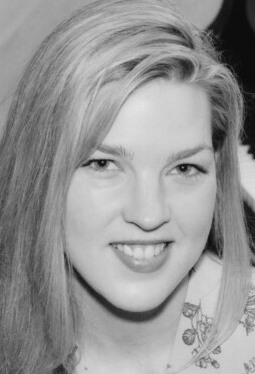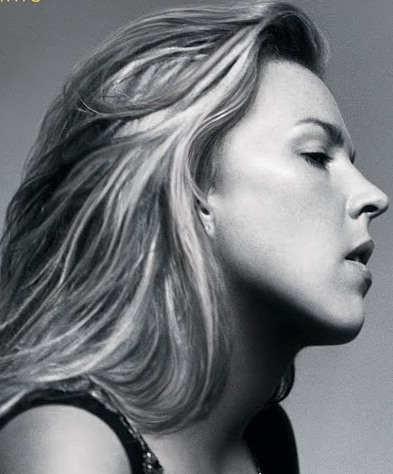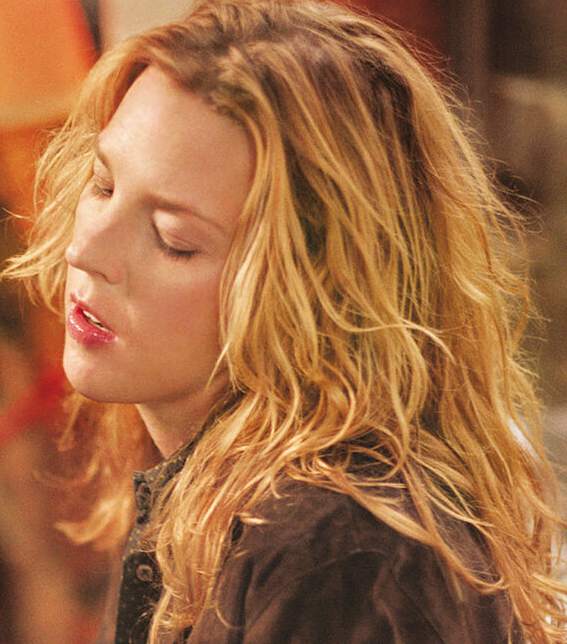Nick
Catalano is a TV writer/producer and Professor of Literature
and Music at Pace University. He reviews books and music
for several journals and is the author of Clifford
Brown: The Life and Art of the Legendary Jazz Trumpeter,
New
York Nights: Performing, Producing and Writing in Gotham
, A
New Yorker at Sea,, Tales
of a Hamptons Sailor and his most recent
book, Scribble
from the Apple. For Nick's reviews,
visit his website: www.nickcatalano.net.
Nick
Catalano podcast with Jason McDonald. The laugh
makers and why humans love to laugh.
Jazz
is the only music in which the same note
can be played night after night but differently each
time.
Ornette Coleman
Music
reviewers regularly get tons of artist publicity from
agents seeking media exposure. Years ago I received
an unusual amount of hype about a jazz singer/pianist
named Diana Krall.
Born
in British Columbia, Krall had begun studying piano
at age of four, attended the Royal Conservatory of  Music,
and played professionally by age 15. In 1981 she won
a scholarship to the Berkeley College of Music in Boston
and studied there from 1981-83, and after playing jazz
in Los Angeles for awhile returned to Canada to record
her first album.
Music,
and played professionally by age 15. In 1981 she won
a scholarship to the Berkeley College of Music in Boston
and studied there from 1981-83, and after playing jazz
in Los Angeles for awhile returned to Canada to record
her first album.
It
was during this time that I began receiving Krall promo
from everywhere and was struck by the huge amount of
material about this virtually unknown singer. I became
interested because quite often over-publicizing of new
performers can often lead to disaster when it becomes
apparent that the performer has nowhere near the talent
that the hype describes. In Krall’s case the publicity
poured in so frequently that I simply had to listen
for her. Unfortunately, I was only able to catch short
parts of her singing on radio and was not overly impressed.
I thought I had heard her enough and agreed to note
her in my reviews of that year’s Kool Jazz festival
performances. Once again, I was able only to catch parts
of two compositions and my initial impression remained
the same and I said so in a perfunctory review. When
I finally encountered her total performance months later,
I was so overwhelmed with the music that wrote and apologized
for my earlier writing.
 Krall’s
early recordings featured guitarist Russell
Malone, bassist John Clayton and drummer Jeff
Hamilton, and her recordings did so well in the late
90s, that her 3rd album was nominated for a Grammy and
remained on the Billboard Jazz Charts for 70 weeks.
She became so popular that producers booked her to star
with Tony Bennett for a 20-city concert tour. And it
was on this tour stop in Lyon France at the nearby Vienne
concert site that I saw and heard what I had sorely
missed in my brief record listenings.
Krall’s
early recordings featured guitarist Russell
Malone, bassist John Clayton and drummer Jeff
Hamilton, and her recordings did so well in the late
90s, that her 3rd album was nominated for a Grammy and
remained on the Billboard Jazz Charts for 70 weeks.
She became so popular that producers booked her to star
with Tony Bennett for a 20-city concert tour. And it
was on this tour stop in Lyon France at the nearby Vienne
concert site that I saw and heard what I had sorely
missed in my brief record listenings.
Krall’s
performances on this concert stop were marvelous. And
I certainly felt badly that I had written inadequately
about her talent. In addition to a compelling contralto
voice, Krall’s singing possessed a phrasing style that
was instantly captivating. She managed to contribute
new and imaginative phrases to standard tunes that had
been recorded by major stars throughout decades. Her
pianism was enormously appealing as she created intriguing
single-note improvs with a right hand that immediately
brought Bud
Powell to mind. I was able to interview her
and we even hung out socially for awhile as I learned
about her background. Western Canada had not exactly
been a hotbed of jazz but she succeeded in bringing
what soon became her star presence to the region.
Soon
her producers arranged for a new recording that would
feature the arrangements of Claus Ogerman, a brilliant
Brazilian whose arrangements had been featured in celebrated
albums with Antonio Carlos Jobim but whose reputation
in North America was relatively unknown. This album
The
Look of Love has become one of the most
popular jazz albums of the millennium and with good
reason. The bossa nova tunes are outstandingly performed,
the standard ballads receive new beauty but above all,
the group swings big time. In conjunction with this
recording the young 37-year-old Diana Krall became a
major jazz artist in demand at concerts everywhere.
During
this time her tour people had arranged to film some
of the concert dates for TV. One of the shows dubbed
Diana
Krall in Paris (available on YouTube) immediately
caught my attention. For many years l had been frustrated
about jazz shows on TV and in film. The producers of
so many of these shows mostly knew very little about
jazz and the shows never went well. Curiously, the one
film that succeeded on so many levels was Round
Midnight produced by Frenchman Bernard
Tavernier. The irony of this best jazz film available
not being produced by an American was not lost when
I wrote a review of the film. And so it was with surprising
pleasure that I saw Diana
Krall in Paris and found all areas of
production to be the best that I had seen; once again,
a jazz film produced in France. The camera shots of
soloists, rhythm trades, banter, and venue were superb
and the sound mixing is first-rate. Other concert dates
on film and also available on youtube include Diana
Krall in Rio.
The
importance of successful artistic production values
in filming jazz cannot be overstated. The music is often
inaccessibly complex for many listeners and the ability
to reprise the concerts on TV can become the easiest
way to learn about the music. For years, critics have
insisted that the only way to ultimately evaluate and
enjoy the music was to see the musicians live. So the
difficulty of finding jazz clubs and/or live performances
in many remote areas is resolved with the TV and film.
The problem has been that heretofore artistic rendering
of jazz  in
these areas has been poor, but the French producers
of the Krall Paris show certainly proved that filming
jazz can be very successful.
in
these areas has been poor, but the French producers
of the Krall Paris show certainly proved that filming
jazz can be very successful.
In
2003, Krall
married Elvis Costello and some of her music,
which included original compositions, took different
and not necessarily better turns with his musical influence.
But the work she had done initially in the last century
has remained her signature success. The bossa novas
and the ballads, especially the ones with Claus Ogerman’s
touch, have become standard fare on radio all over the
world.
The
lesson that remains is that only careful and repeated
attention to new artists from critics will suffice to
uncover artistic value. And also that carefully prepared
publicity must come from the PR companies in order to
give critics accurate templates to initiate their reactions.
The
recording industry has not had the best reputation in
enabling audiences to learn about the ins and outs of
the jazz world. But Diana Krall and her Canadian producers
have been exemplary in respect to recording quality
and video concert production.
COMMENTS
Grace.
What a great read. I like her voice and music.